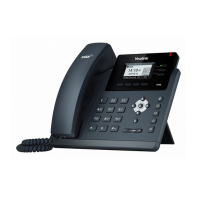Administrator’s Guide for SIP-T2 Series/T4 Series/T5 Series IP Phones
ii
use IP phone features integrated with BroadSoft UC-One on Yealink IP phones.
For support or service, please contact your Yealink reseller or go to Yealink Technical Support online:
http://support.yealink.com/.
Recommended References
For more information on configuring and administering other Yealink products not included in this guide,
refer to product support page at Yealink Technical Support.
To access the latest Release Notes or other guides for Yealink IP phones, refer to the Document
Download page for your phone at Yealink Technical Support.
If you want to find Request for Comments (RFC) documents, type
http://www.ietf.org/rfc/rfcNNNN.txt
(NNNN is the RFC number) into the location field of your browser.
For other references, look for the hyperlink or web info throughout this administrator guide.
Typographic and Writing Conventions
Yealink documentations contain a few typographic conventions and writing conventions.
You need to know the following basic typographic conventions to distinguish types of in-text
information:
Highlight the web/phone user interface items such as menus, menu
selections, soft keys, or directory names when they are involved in a
procedure or user action (for example, click Settings->Upgrade.).
Also used to emphasize text (for example, Important!).
Used to emphasize text, to show the example values or inputs (format of
examples:
http(s)://[IPv6 address]
).
Used for cross references to other topics related to this topic (for example,
Ring Tones), for hyperlinks to external sites and documents, for example, RFC
3315 or Yealink_SIP_IP_Phones_Auto_Provisioning_Guide.
You also need to know the following writing conventions to distinguish conditional information:
Indicate that you must enter information specific to phone or network. For
example, when you see <MAC>, enter your phone’s 12-digit MAC address. If
you see <phoneIPAddress>, enter your phone’s IP address.

